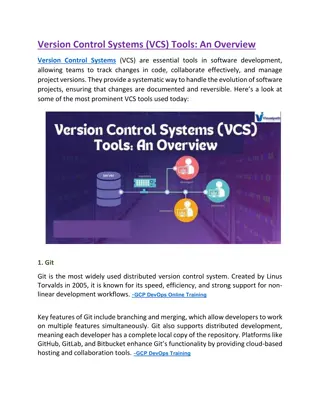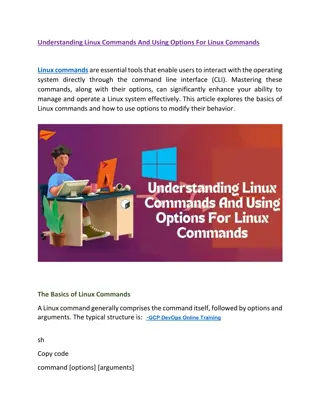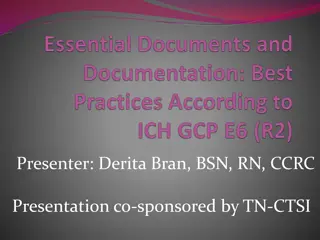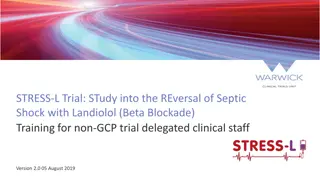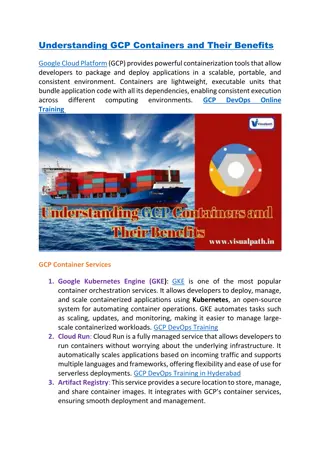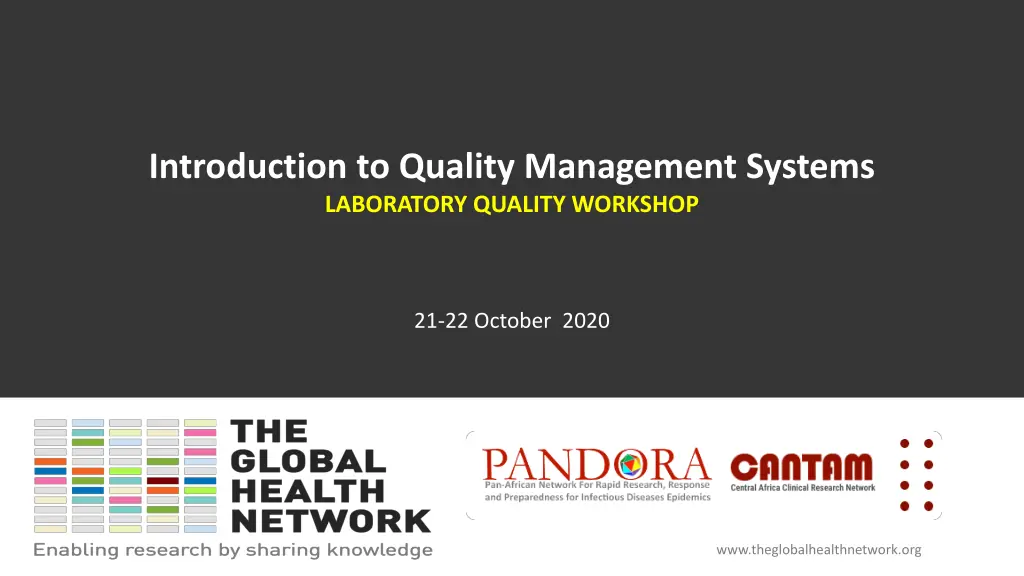
Laboratory Quality Management Systems Workshop Insights
Explore factors contributing to errors in laboratory results investigation, trust in data reliability, and measures to prevent recurrence. Dive into the role of clinical laboratories in research, clinical trials, and quality management systems phases like QC, QA, and QMS.
Download Presentation

Please find below an Image/Link to download the presentation.
The content on the website is provided AS IS for your information and personal use only. It may not be sold, licensed, or shared on other websites without obtaining consent from the author. If you encounter any issues during the download, it is possible that the publisher has removed the file from their server.
You are allowed to download the files provided on this website for personal or commercial use, subject to the condition that they are used lawfully. All files are the property of their respective owners.
The content on the website is provided AS IS for your information and personal use only. It may not be sold, licensed, or shared on other websites without obtaining consent from the author.
E N D
Presentation Transcript
Introduction to Quality Management Systems LABORATORY QUALITY WORKSHOP 21-22 October 2020 www.theglobalhealthnetwork.org
CASE SCENARIO What factors could have contributed to this scenario? How will you investigate this occurrence? Should the Doctor trust the other 10 results? Which phase of Quality System did this error occur? As the Laboratory Manager, what measures will you put in place to prevent this from recurring? You are the Clinical Laboratory Manager in the Medical Research Centre. The Chemistry instrument needed replacement of laser/filter. The Engineer was informed upon which he flew and replaced the part and flew back. Since he did not wish to miss his flight, he said he will send the worksheet when he reach his office. The Lab staff on late shift reported to work after Engineer had left and he immediately processed 13 samples he found stored in the refrigerator 2-8C. The Lab Tech, analyzed the samples, reported and released results to the Clinician on call. The Clinician on call noticed an elevated ALT, AST and gamma GT on 3 different results. The Clinician called the Lab to confirm the 3 results since they were not correlating with the patient conditions.
ROLE OF CLINICAL LABORATORIES Research / Clinical Trials / Clinical Laboratories 3 Laboratory provides service by transforming human organic materials into information. Making participant management decision information produced by the Lab can change the way Physician thinks and acts Determine eligibility of the study participants Monitoring the Safety of the intervention . Determine the primary study endpoint
INTRODUCTION TO QMS 4 Body Organs FEEDBACK Body Organic materials transform into information complex complex Quality Control (QC) Minimize errors in the Lab People Performed in the best possible ways Procedures Processes SLMTA Accurate Reliable Reproducible Repeatable Quality Assurance (QA) SLIPTA QUALITY MANAGEMENT SYSTEMS (QMS)
RELATIONSHIP BETWEEN QC / QA / QMS Clinical, Clinical Trials, Research Laboratories Monitors the entire system Measure process performance Measure method/procedure performance
Compare & Contrast: QA & Q C 6 QMS QMS QA QA QC QC
QMS PHASES 7 PRE PRE- -ANALYTICAL PHASE ANALYTICAL PHASE Request Forms Sample collection / Transport / Storage Sample Labelling & identification Staff Training Errors 60% Misidentification Inappropriate Specimen Collection POST POST- -ANALYTICAL PHASE ANALYTICAL PHASE ANALYTICAL PHASE ANALYTICAL PHASE Sample Reception Equipment Validation Method validation IQC System Reagents & Kits validation Errors 15% Undetected QC failure Use of expired reagent Review & Release of Results. Communication between Lab & Ward Errors 23% Transcription errors Critical Value not reported COMPLEMENTATRY PHASES
Poor QMS Leads to Lab Errors Consequences of Laboratory Errors Failure to provide to provide proper treatment Additional & unnecessary diagnostic testing Unnecessary Treatment & treatment complications Delay in correct diagnosis Provision of inappropriate care
NON-QMS / NON-GCLP LAB (tip of Iceberg) 9 WHAT YOU CAN SEE Low staff morale STAFF Customers Complaints CUSTOMERS WHAT YOU CANNOT SEE False Positive/Negative Transcription errors Sent to wrong location RESULTS / REPORTS Shortcuts QC failures ignored TESTING Rejected Samples Lost specimens mislabeled /unlabeled SAMPLES/SPECIMENS Downtime Out of stock No calibration EQUIPMENT & REAGENTS
LAB ACCREDITATION / GCLP COMPLIANT -Oblivious of the problem -Obfuscate problems -Ignore failures -Does not Investtigate -Take no action -Detects problems -Investigate -Take Action -Errors <1%
QMS BUILDING BLOCKS FACILITIES & SAFETY ORGANIZATION PERSONNEL EQUIPMENT PROCESS CONTROL INFORMATION MANAGEMENT DOCUMENTS & RECORDS OCCURRENCE MANAGEMENT ASSESSMENT S CUSTOMER SERVICE PROCESS IMPROVEMENT PURCHASING & INVENTORY
KEY STEPS TO QMS IMPLEMENTATION 12 LAB AUDIT Train the Internal Auditor Re-evaluate the Gap between std & current status Implement CAPA STEP 5 3-6 Months IMPLEMENT THE QMS PLAN Start with Technical areas IQC & EQAS Documentation SOPs , Training etc STEP 4 GAP ANALYSIS WITH SELECTED STANDARDS Define the target Develop a plan Delegate Responsibilities 6 -8 Months STEP 3 6 -8 Months INVOLVEMENT OF LAB STAFF The staff should own the process Buying in STEP 2 COMMITMENT OF TOP MANAGEMENT Motivation & support to staff. Allocation of resources Quality policy Selection of standard 1-2 years STEP 1 The QMS Milestone
ORIGIN OF GCLP Specific Health Medical Products & Treatment Practices 13 2002 WHO Handbook Pub SAFE Good Clinical Research Practice EFFECTIVE Designed to answer important Scientific & Health Care questions Conduct Clinical Research / Trials GCLP applies STDs established Under GLP relevant to analysis of samples from Clinical Trials while ensuring that the Principles of GCP are satisfied GCP: Safety, Rights & GCP: No define std for Labs GCP No specifics for Laboratories. Asking for Lab Ref Values Lab Accreditation Quality Control Well-being of participants Principles of GCP Principles of GCP Standards for designing Standards for designing Conducting, recording Conducting, recording reporting Clinical Trials reporting Clinical Trials GCLP G L P p r i n c i p l e s c a n n o t b e a p p l i e d f o r C l i n i c a l s a m p l e s GLP Principles GLP Principles Established 1990 s by Established 1990 s by OECD OECD Hybrid of GCP & GLP PRINCIPLES Accurate, Accurate, Reliable Reliable & Credible & Credible Data is Data is generated from generated from Lab Lab GLP principles: ensure consistency, reliability , reproducibility, quality & integrity of Non-Clinical studies GLP: Not specific for Labs GLP: Not specific for Labs Supporting clinical studies Supporting clinical studies
WHICH WAY TO GO? GCLP or ISO15189/ WHO AFRO SLIPTA GCLP or ISO15189/ WHO AFRO SLIPTA 14 Run concurrently Good for Labs supporting multinational studies BOTH GCLP & ISO 15189 BOTH GCLP & ISO 15189 GCLP Guidelines GCLP Guidelines Lab decides its own Standards. Less cost implications ISO 15189 / AFRO WHO SLIPTA ISO 15189 / AFRO WHO SLIPTA Lab follow the standards prescribed by a third party. High Cost implications
COMPARE & CONTRAST (ISO15189 & GCLP Standards) SHARE ISO15189 GCLP Organization & Personnel Document Control Quality Management Corrective Actions Records Control Reporting of Results Laboratory Information System Audits Specimen Transport Management. Customer Feed back Resolution of complaints Infrastructures. Continuous Improvement Standard Operation Procedures. Preventive Action Management Review Validation & Verification Quality Plan Service Agreements Analytical Plan Identification & Control Archiving of Records Examination by Referral Lab Safety in Laboratories
DIFFERENT STANDARDS SAME GOAL 16 POTENTIAL BENEFITS OF QMS / GCLP POTENTIAL BENEFITS OF QMS / GCLP LAB SYSTEMS Efficient and Reliable LAB PROCESSES Standardized & Consistent LAB PROCEDURES Reproducible & Repeatable LAB RESULTS Accurate and Precise LAB REPORTING Timely and Prompt
CASE SCENARIO You are the Clinical Laboratory Manager in the Medical Research Centre. The Chemistry instrument needed replacement of laser/filter. The Engineer was informed upon which he flew and replaced the part and flew back. Since he did not wish to miss his flight, he said he will send the worksheet when he reach his office. The Lab staff on late shift reported to work after Engineer had left and he immediately processed 13 samples he found stored in the refrigerator 2-8C. The Lab Tech, analyzed the samples, reported and released results to the Clinician on call. The Clinician on call noticed an elevated ALT, AST and gamma GT on 3 different results. The Clinician called the Lab to confirm the 3 results since they were not correlating with the patient conditions. 1) What factors could have contributed to this scenario? 2) How will you investigate this occurrence? 3) Should the Doctor trust the other 10 results? 4) Which phase of Quality System did this error occur? 5) As the Laboratory Manager, what measures will you put in place to prevent this from recurring?
CASE SCENARIO 1) What factors could have contributed to this scenario? 1) Analyzer part was replaced but Calibration was not done. 2) Personnel issues 3) Staffing / workload 4) Staff handover 5) Incomplete Equipment service 2) Should the Doctor trust the other 10 results? Why? Doctor should not make any decision on the 13 results until root cause is investigated and resolved. Results appears inaccurate
CASE SCENARIO 3) How will you investigate this occurrence? Run the QC materials Check Calibration Repeat the 13 samples (old sample & fresh samples) 4) Which phase of Quality System did this error occur? Pre-Analytical Variables Personnel Method Materials Instrument / machine Environment
CASE SCENARIO 5) As the Laboratory Manager, what measures will you put in place to prevent this from recurring? Use the incident as opportunity for Quality improvement Arrange for Laboratory staff Training Clarify the contract with the Vendor and spell out the scope of work. Standard Operating Procedure Equipment Log book Staff Handing over log
Acknowledgements Prof Trudie Lang Director, The Global Health Network The Global Health Network Operational Team: Liam Boggs Helena Wilcox Alex Segrt Sada Aliyeva Ken Awuondo Zainab Al-Rawni Lauren Whelan Welile Sinead Bonny Baker Funding: The Bill and Melinda Gates Foundation









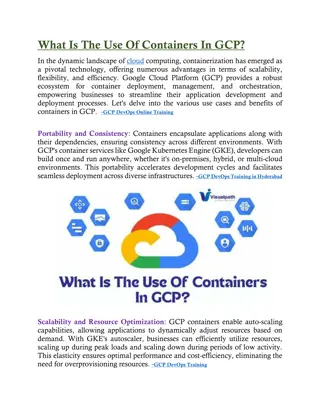
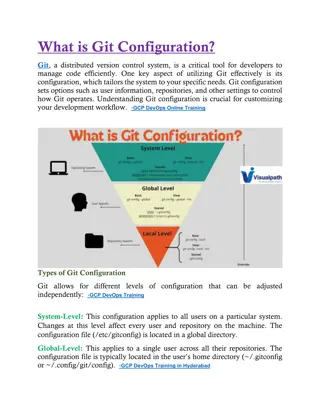




![Google Cloud Data Engineer Online Training in Hyderabad, Ameerpet [2024]](/thumb/89926/google-cloud-data-engineer-online-training-in-hyderabad-ameerpet-2024.jpg)
